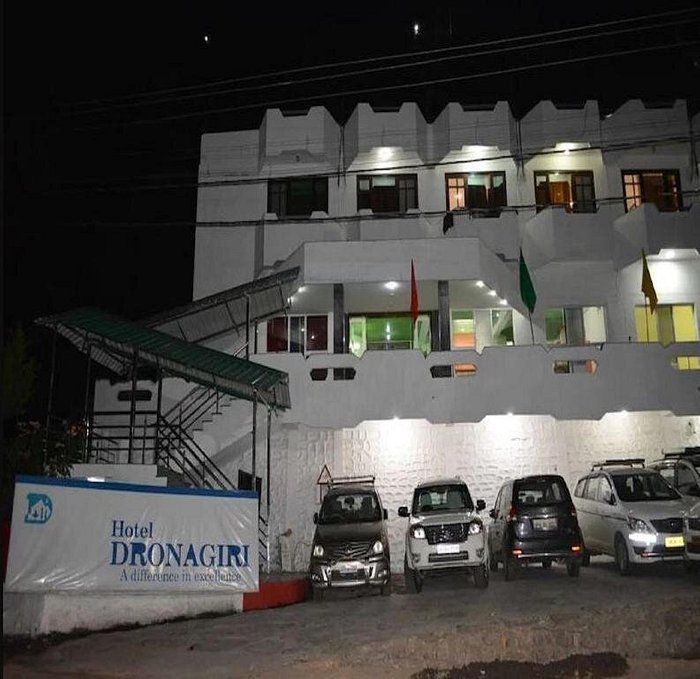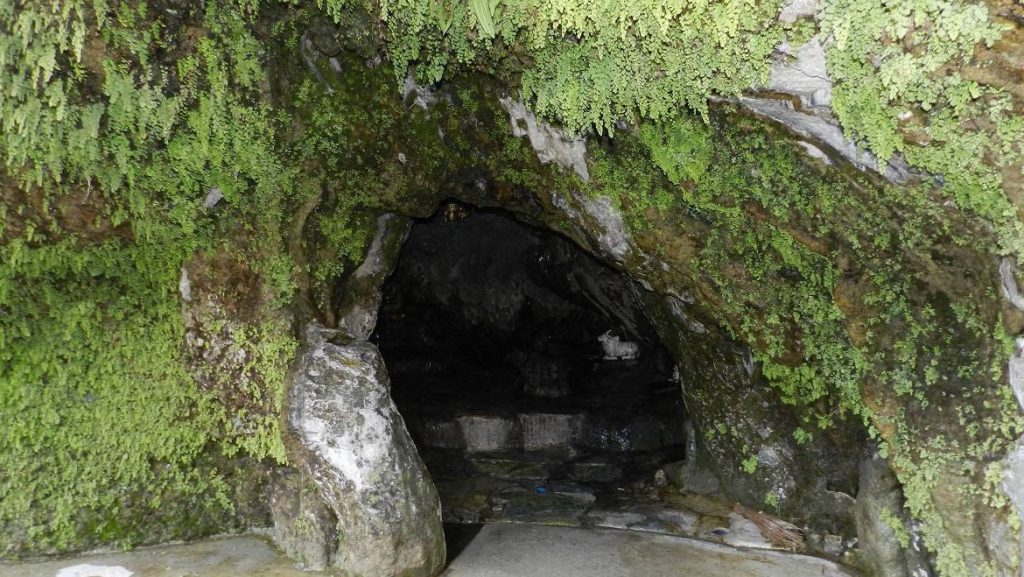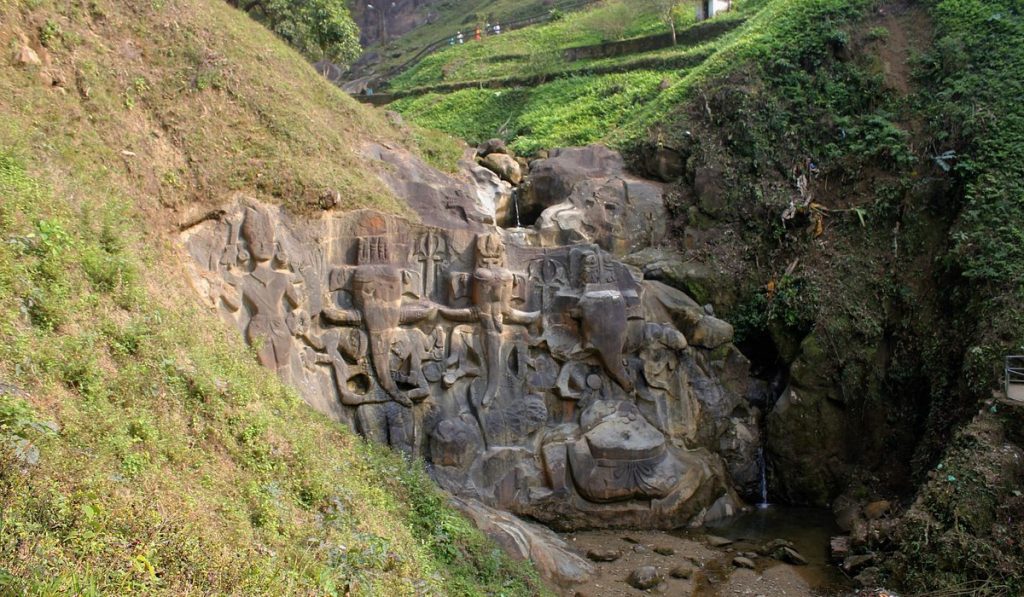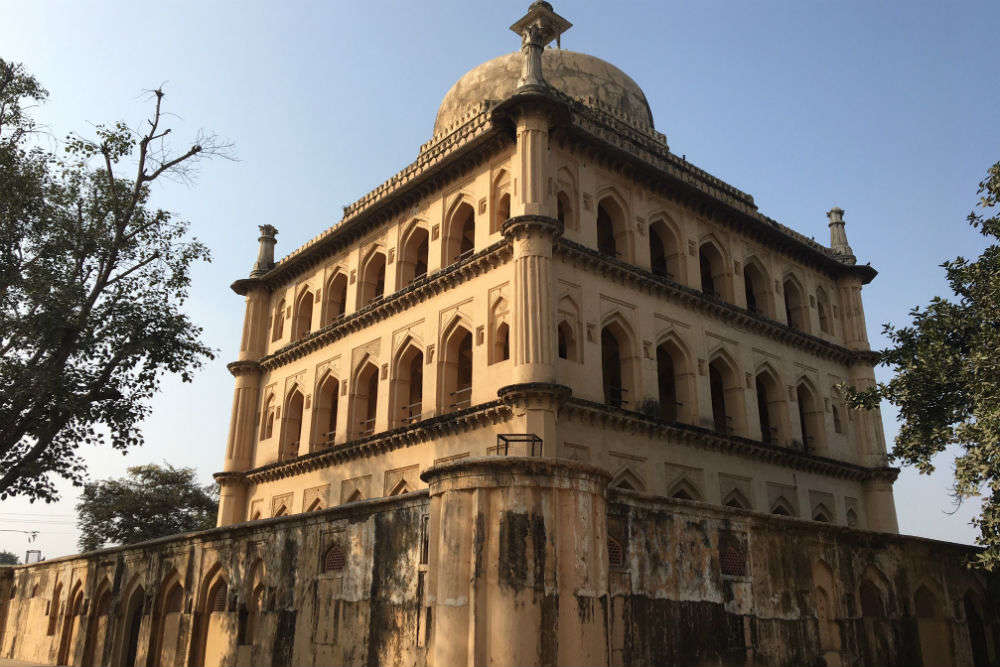Nestled in the heart of Majuli, Kamalabari Satra is a spiritual haven. This ancient institution reflects Assam’s rich cultural heritage.
Kamalabari Satra, founded in the 17th century, serves as a center for Vaishnavism. It plays a vital role in preserving Assamese culture and traditions. The Satra houses many monks who dedicate their lives to spiritual practices and community service. Its serene environment attracts pilgrims and tourists alike.
Visitors can experience traditional music, dance, and art here. The Satra also holds religious festivals that showcase local customs. Kamalabari Satra offers a glimpse into Assam’s spiritual and cultural essence. Whether you seek peace or cultural enrichment, this sacred site welcomes all with open arms.
Introduction To Kamalabari Satra
Kamalabari Satra, located in Majuli, Assam, is a significant cultural and religious center. Established in the 16th century, it plays a key role in preserving Assamese culture and traditions.
Kamalabari Satra is a renowned cultural and religious institution in Assam. Established in the 16th century, it is located on Majuli Island. This satra is a symbol of the Vaishnavite movement. It was initiated by the great saint Srimanta Sankardeva. Kamalabari Satra is known for its rich heritage and traditions. It plays a vital role in preserving Assamese culture.Historical Significance
Kamalabari Satra was founded in 1673. It was established by Bedulapadma Ata, a disciple of Srimanta Sankardeva. The satra has witnessed many historical events. It played a key role during the Ahom rule in Assam. The satra also contributed to the spread of Vaishnavism. It has a rich collection of ancient manuscripts. These documents are valuable for researchers and historians.Cultural Importance
Kamalabari Satra is a hub of Assamese culture. It promotes the art of Sattriya dance and music. The satra has a school for training young monks. They learn traditional arts and rituals. The satra also celebrates many festivals. These events attract visitors from far and wide. The satra’s cultural programs are a major attraction. They showcase the rich heritage of Assam. “`
Credit: www.dreamstime.com
Majuli Island Overview
Kamalabari Satra on Majuli Island is a cultural and religious hub. It showcases unique Assamese dance, music, and art traditions.
Majuli Island, located in Assam, India, is a captivating destination that offers a unique blend of natural beauty and cultural heritage. Known for its vibrant satras (monasteries), including the famous Kamalabari Satra, Majuli is a haven for those seeking tranquility and spiritual enrichment. Here’s a closer look at the geographical location and environmental features of this enchanting island.Geographical Location
Majuli Island is nestled in the mighty Brahmaputra River, making it the world’s largest river island. Imagine standing on the banks of the river, feeling the cool breeze as you gaze at the expansive waters surrounding you. This island is situated about 20 kilometers from the town of Jorhat. If you’re planning a visit, you can easily reach Majuli via a ferry ride from Nimati Ghat, which is an experience in itself. The ferries are bustling with locals and visitors, creating a lively atmosphere that sets the tone for your adventure. Majuli’s strategic location in the heart of Assam adds to its charm. The island is accessible yet remote enough to offer a break from the hustle and bustle of city life. It’s a perfect destination for anyone looking to reconnect with nature and immerse in the rich Assamese culture.Environmental Features
Majuli boasts a diverse ecosystem that will leave you in awe. As you explore the island, you’ll find lush green fields stretching as far as the eye can see. These fertile lands are home to various crops, including rice and mustard, which add to the scenic beauty. Birdwatchers will be thrilled to know that Majuli is a paradise for migratory birds. During winter, the island transforms into a birdwatcher’s haven with species like the Greater Adjutant Stork and Pelicans making their annual visit. Don’t forget to bring your binoculars! The wetlands and water bodies in Majuli play a crucial role in maintaining the ecological balance. These areas support a rich aquatic life and provide a livelihood for the local fishermen. If you have the chance, take a boat ride through these wetlands. The tranquility and the sight of fishermen at work are truly mesmerizing. The island’s environmental features aren’t just about its natural beauty. They also reflect the sustainable practices of the local communities. The people of Majuli have a deep connection with their land and water, which is evident in their efforts to preserve the environment. Have you ever considered how your travel choices impact the places you visit? Majuli encourages you to think about sustainability and responsible tourism. By choosing eco-friendly options and supporting local businesses, you can contribute to the preservation of this beautiful island. In Majuli, every moment is a reminder of the delicate balance between nature and human life. It’s an experience that stays with you long after you’ve left the island. So, are you ready to explore Majuli and discover the magic of Kamalabari Satra? Let the journey begin!Founding Of Kamalabari Satra
Have you ever wondered how a place becomes a cornerstone of culture and spirituality? The Kamalabari Satra, an influential Vaishnavite monastery in Assam, is one such place. It’s not just a religious institution; it’s a living testament to a rich cultural legacy. Let’s delve into its fascinating origins.
Establishment Year
Did you know Kamalabari Satra was established in 1673? Yes, that’s over three centuries of history! This monastery has witnessed the rise and fall of empires, the ebb, and flow of cultures. It’s amazing to think about the dedication and vision it took to create something that has lasted for so long.
Founder’s Vision
The visionary behind Kamalabari Satra was Badula Ata. His mission was simple yet profound: to promote the teachings of Mahapurush Srimanta Sankardeva. But it wasn’t just about religion. Badula Ata envisioned a community where education, art, and spirituality coexisted harmoniously.
Have you ever felt a deep connection to a place because of its atmosphere? Kamalabari Satra is that kind of place. It’s not just the intricate architecture or the serene environment. It’s the spirit of its founder that you can still feel today.
Imagine walking through its corridors and realizing that these walls have seen centuries of devotion and learning. It’s humbling, isn’t it? You can almost hear the echoes of prayers and the rustle of ancient texts being studied.
Why do you think some places manage to preserve their essence through centuries? Could it be the founder’s vision and the community’s commitment to that vision? Kamalabari Satra certainly makes a compelling case for this theory.
So, the next time you find yourself in Assam, make sure to visit Kamalabari Satra. Feel the weight of its history, and let yourself be inspired by its enduring legacy. What will you take away from such an experience? Perhaps, a deeper understanding of how one person’s vision can shape the future for generations to come.
Architectural Marvels
Kamalabari Satra in Assam showcases exquisite architecture and deep spiritual significance. This monastic site features beautiful wooden carvings and serene surroundings. A visit offers insight into Assamese culture and devotion.
Kamalabari Satra, nestled in the heart of Assam’s Majuli Island, is not just a spiritual haven but also an architectural gem. As you walk through its serene premises, you can’t help but marvel at the intricate designs and unique structures that tell the story of a rich cultural heritage. Let’s dive into the architectural marvels of Kamalabari Satra and discover what makes it truly special.Design Elements
The design elements of Kamalabari Satra are a harmonious blend of functionality and aesthetics. The use of locally sourced materials, like bamboo and thatch, reflects a deep connection with nature. You will find that the walls and ceilings are adorned with traditional Assamese motifs, depicting scenes from folklore and daily life. These motifs are not just for decoration; they convey stories and teachings that are integral to the Satra’s spiritual essence. The open courtyards are another distinctive feature, allowing natural light to flood in, creating a peaceful and contemplative environment. Have you ever wondered how architecture can influence your state of mind? Kamalabari Satra might just provide the answer.Unique Structures
As you explore further, you’ll come across unique structures that set Kamalabari Satra apart from other monastic institutions. One such structure is the Namghar, the main prayer hall. Unlike typical constructions, the Namghar at Kamalabari is expansive, with an intricately designed roof supported by wooden pillars. These pillars, often carved with exquisite patterns, are a testament to the craftsmanship of the local artisans. Another fascinating structure is the Manikut, which houses the sacred idol. The Manikut is built on an elevated platform, emphasizing its significance. Its design ensures that it remains cool even during the hottest months, showcasing an understanding of climate-responsive architecture. The living quarters of the monks, known as Hati, are equally impressive. They are designed to be simple yet functional, promoting a lifestyle of minimalism and spiritual focus. Each Hati has a small garden, adding a touch of greenery and tranquility to the living space. Have you ever considered how your living environment affects your daily life? The monks at Kamalabari Satra live in a space that fosters peace and simplicity. In conclusion, the architectural marvels of Kamalabari Satra are more than just structures; they are a reflection of a way of life that values simplicity, functionality, and connection with nature. By visiting Kamalabari Satra, you get to experience not just the beauty of the buildings, but also the wisdom and traditions they embody.Religious Practices
Kamalabari Satra, located in Assam, is a significant center for Vaishnavism. Devotees engage in daily prayers, rituals, and cultural activities, preserving ancient traditions.
Kamalabari Satra, an important cultural and religious institution in Assam, India, is known for its unique and devout religious practices. Steeped in history and spirituality, the Satra offers a deep dive into the ancient traditions of Vaishnavism. It’s not just a place of worship but a living center of faith, where rituals, festivals, and daily events bring the teachings of Srimanta Sankardeva to life.Daily Rituals
The daily rituals at Kamalabari Satra are meticulously followed, offering a serene and disciplined atmosphere. Every morning, the monks and devotees gather for the morning prayers, known as “Prabhat Pheri.” This ritual involves singing hymns and chanting the name of Lord Krishna, creating a spiritual ambiance that fills the air with tranquility. Throughout the day, various “Bhagawat Path” sessions are held, where sacred texts are read and interpreted. These sessions are open to everyone, providing a chance to immerse in the teachings and reflect on their meanings. In the evenings, the “Sandhya Aarti” is performed, a captivating ceremony involving the lighting of lamps, ringing of bells, and synchronized chants. This ritual not only signifies the end of the day but also reinforces the community’s collective faith.Festivals And Events
Kamalabari Satra is also renowned for its vibrant festivals and events that attract visitors from far and wide. These celebrations are not merely occasions of joy but profound expressions of devotion and cultural heritage. One of the most significant festivals is “Raas Leela,” which vividly depicts the life of Lord Krishna through dramatic performances, dance, and music. The entire Satra comes alive with elaborate decorations, traditional costumes, and an atmosphere of festivity. During “Janmashtami,” the birth of Lord Krishna is celebrated with great zeal. Devotees fast, sing devotional songs, and enact scenes from Krishna’s life. The midnight celebration, marking Krishna’s birth, is particularly moving. Throughout the year, other events such as “Holi,” “Rangoli Utsav,” and “Ankiya Bhaona” showcase the rich cultural tapestry of the Satra. These events not only reinforce faith but also bring the community together, fostering a sense of unity and shared purpose. Have you ever wondered how participating in these rituals might deepen your spiritual practice? Visiting Kamalabari Satra offers more than a glimpse into traditional religious practices; it provides an opportunity to engage actively and find personal meaning in these timeless traditions.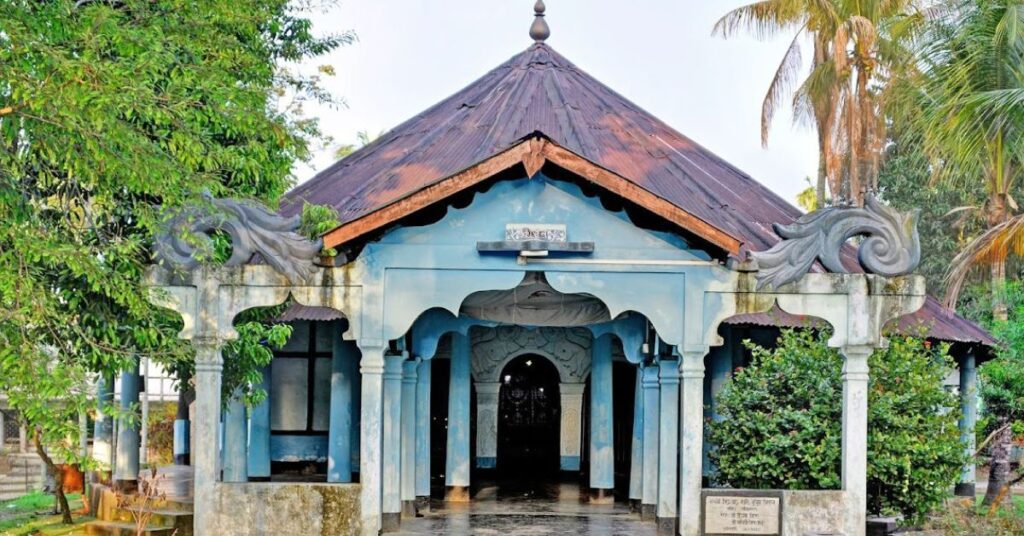
Credit: xplro.com
Role In Assamese Culture
Kamalabari Satra holds a special place in Assamese culture. This cultural institution has influenced art, music, and education for centuries. Founded by the disciples of the great saint Srimanta Sankardeva, Kamalabari Satra continues to be a beacon of tradition and learning.
Art And Music
Kamalabari Satra is a hub of traditional Assamese art and music. The Satra has preserved many ancient dance forms. Devotees perform these dances during religious ceremonies. The Satra also houses skilled artisans who create traditional masks. These masks are used in Bhaona, a form of Assamese theater. Musicians at the Satra master traditional instruments like the khol and flute. Their performances keep the heritage alive and vibrant.
Educational Contributions
Kamalabari Satra has contributed significantly to Assamese education. It serves as a center for religious and cultural learning. Young monks receive training in various disciplines here. They learn about the teachings of Sankardeva. They also study the rich history and traditions of Assam. The Satra runs classes in literature, music, and philosophy. This helps to maintain the cultural fabric of the region. The institution also encourages the study of ancient texts. This ensures that the wisdom of the past is not lost.
Pilgrimage Experience
Visiting Kamalabari Satra offers a serene pilgrimage experience. This sacred site, nestled on Majuli Island, brings you closer to spiritual tranquility. The Satra is a treasure trove of Assamese culture and spirituality. Pilgrims find solace in its peaceful environment. The rhythmic chants and traditional practices evoke a sense of devotion.
Visitor Guidelines
Respect the local customs while visiting Kamalabari Satra. Dress modestly. Avoid loud conversations. Photography inside the prayer halls is prohibited. Follow the instructions given by the monks. Do not litter in the sacred premises. Maintain silence and respect the sanctity of the place. These guidelines ensure a peaceful visit for everyone.
Spiritual Activities
Participate in the daily prayers and rituals. These activities enhance your spiritual journey. Listen to the soulful chanting by the monks. It calms the mind and soul. Join the meditation sessions. They help in attaining inner peace. Engage in community services. This fosters a sense of belonging. Experience traditional Assamese dance and music performances. They celebrate the rich cultural heritage of the region.
Preservation Efforts
The Kamalabari Satra, a cultural gem in Assam, has a rich heritage. Efforts to preserve this heritage are crucial. These efforts ensure the satra’s legacy continues for future generations. The preservation of Kamalabari Satra involves several initiatives. Community involvement plays a vital role in these efforts.
Conservation Initiatives
Conservation initiatives are vital for preserving Kamalabari Satra’s heritage. Experts are restoring the satra’s ancient structures. They use traditional materials and methods. This approach maintains the site’s historical integrity. Regular maintenance work keeps the buildings in good condition. The satra’s valuable manuscripts are digitized. This helps protect them from physical damage.
Efforts also focus on the satra’s surroundings. Planting trees and maintaining gardens enhance the area’s beauty. These green spaces offer a serene environment for visitors. Conservation initiatives ensure the satra remains a cultural treasure.
Community Involvement
Community involvement is key to preserving Kamalabari Satra. Local people participate actively in preservation efforts. They help maintain the satra’s buildings and gardens. Community members also support cultural programs. These programs promote the satra’s traditions and history.
Educational workshops engage the younger generation. These workshops teach them about the satra’s significance. Involving the community creates a sense of ownership. People feel proud of their heritage and work to protect it. Community involvement ensures the satra’s legacy lives on.
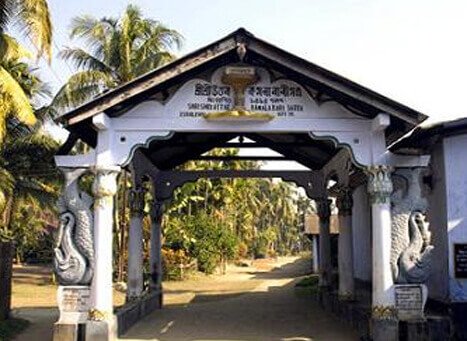
Credit: www.tourmyindia.com
Frequently Asked Questions
Why Is Kamalabari Satra Famous?
Kamalabari Satra is famous for its cultural heritage. It promotes art, literature, music, and classical dance. Its contributions to Assamese culture make it a significant spiritual center.
What Is Bengenaati Satra Famous For?
Bengenaati Satra is famous for its cultural heritage and religious significance. It preserves Assamese traditions and promotes Vaishnavism.
What Is Garamur Satra Famous For?
Garamur Satra is famous for its vibrant religious festivals and traditional dance performances. It preserves Assamese culture and heritage.
What Is A Satra In Assam?
A Satra in Assam is a religious institution dedicated to the worship of Lord Vishnu. It promotes Vaishnavism and Assamese culture.
Conclusion
Kamalabari Satra is a treasure of culture and spirituality. Visiting this place offers a glimpse into Assam’s rich traditions. The serene environment provides a peaceful retreat from daily life. Explore the art, music, and rituals that define this unique spot.
Kamalabari Satra connects the past with the present beautifully. This site is a must-visit for anyone interested in history and heritage. Discover its charm and let it enrich your soul. Plan your trip to Kamalabari Satra soon. Experience the beauty and tranquility firsthand.
{ “@context”: “https://schema.org”, “@type”: “FAQPage”, “mainEntity”: [ { “@type”: “Question”, “name”: “Why is Kamalabari Satra famous?”, “acceptedAnswer”: { “@type”: “Answer”, “text”: “Kamalabari Satra is famous for its cultural heritage. It promotes art, literature, music, and classical dance. Its contributions to Assamese culture make it a significant spiritual center.” } } , { “@type”: “Question”, “name”: “What is Bengenaati Satra famous for?”, “acceptedAnswer”: { “@type”: “Answer”, “text”: “Bengenaati Satra is famous for its cultural heritage and religious significance. It preserves Assamese traditions and promotes Vaishnavism.” } } , { “@type”: “Question”, “name”: “What is Garamur Satra famous for?”, “acceptedAnswer”: { “@type”: “Answer”, “text”: “Garamur Satra is famous for its vibrant religious festivals and traditional dance performances. It preserves Assamese culture and heritage.” } } , { “@type”: “Question”, “name”: “What is a Satra in Assam?”, “acceptedAnswer”: { “@type”: “Answer”, “text”: “A Satra in Assam is a religious institution dedicated to the worship of Lord Vishnu. It promotes Vaishnavism and Assamese culture.” } } ] }
